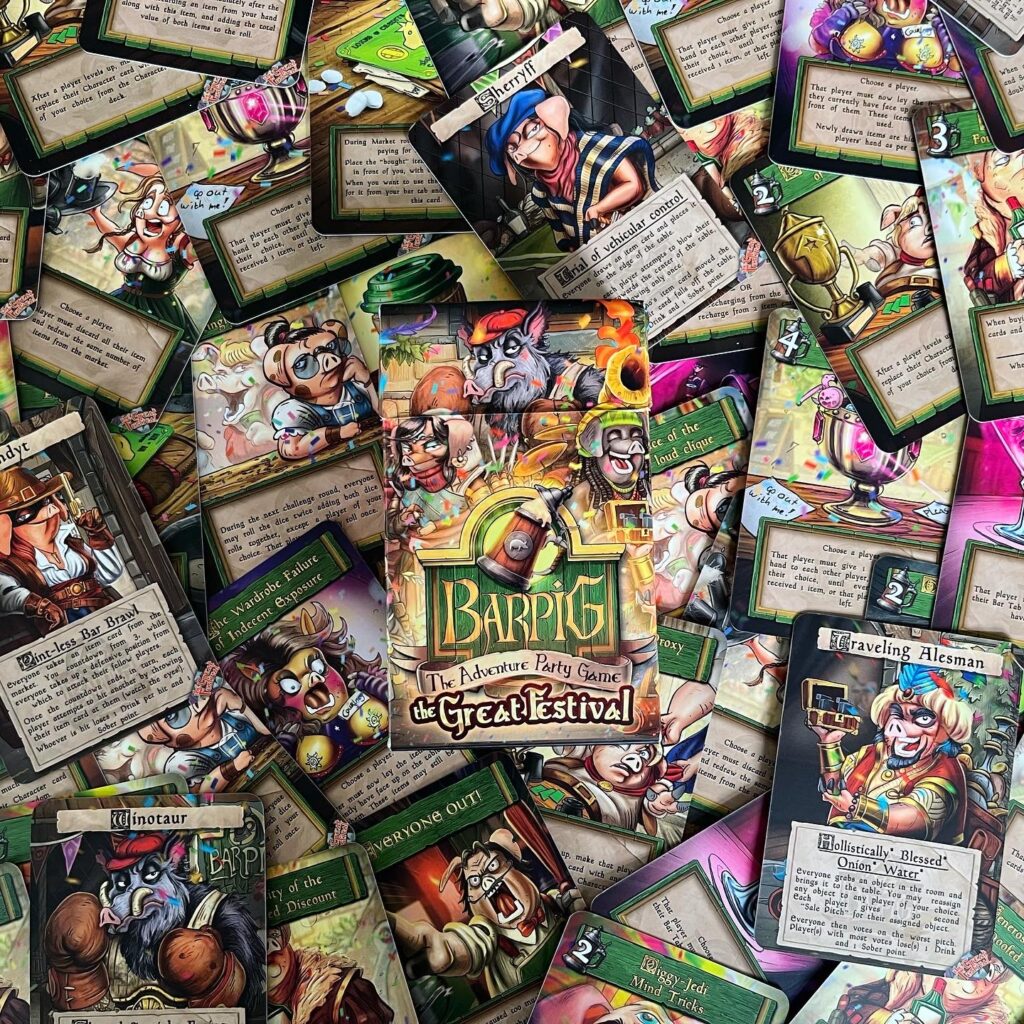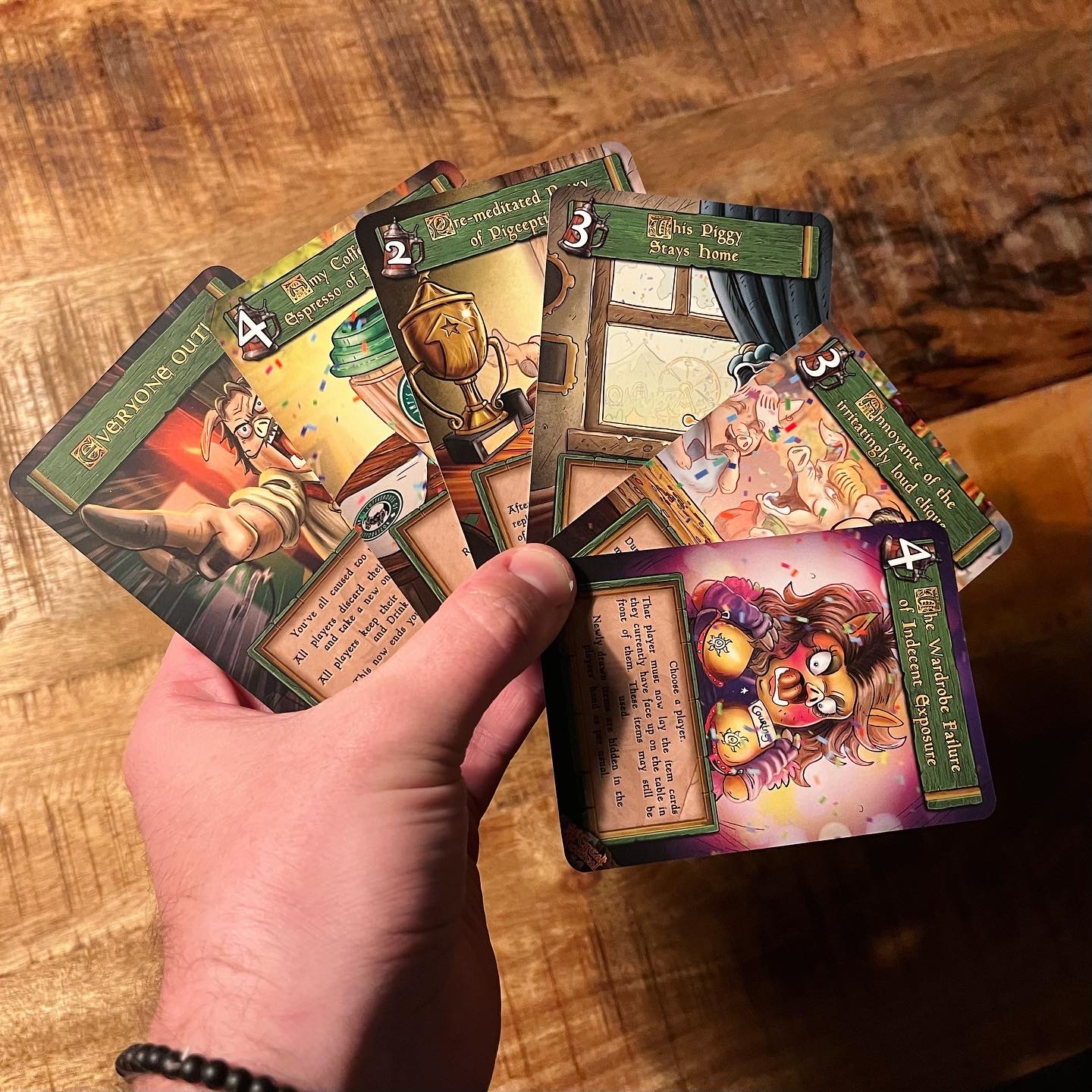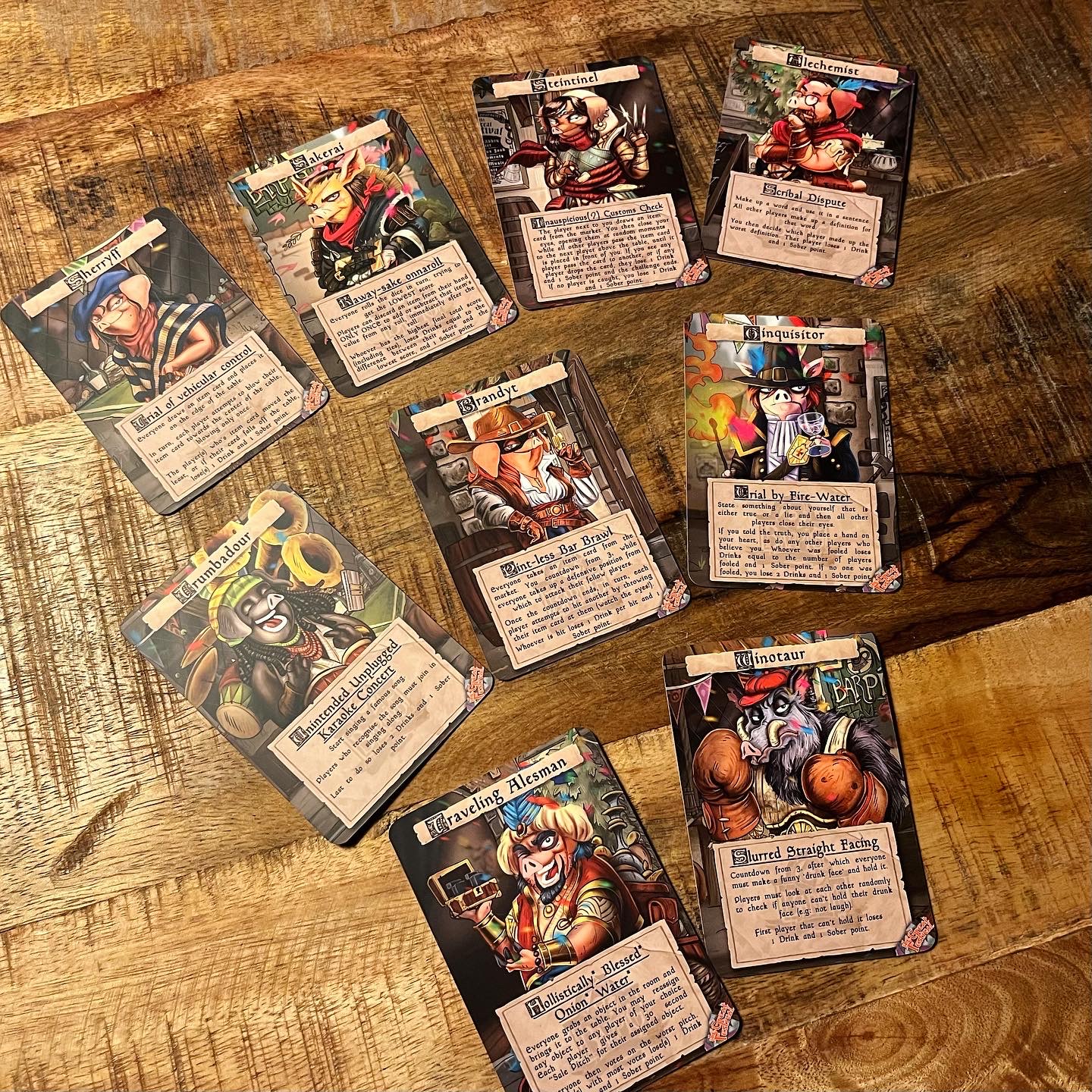Faithful readers of Dice Daniel know that when we (at first just lonesome Daniel and later a group of playful friends) started writing reviews on Social Media, our prose often consisted of countless puns. Like a bunch of bawdy little pigs, we couldn’t get enough of looking for these linguistic truffles. The puns, now often repeated and not only by us, have given way to longer reviews on our website. Incidentally, this does not make us appreciate puns any less. In fact, puns are still great.

Barpig is a party game full of great puns, beautiful artwork and hilarious gameplay. Salient detail: Barpig was one of the first game publishers Dice Daniel collaborated with. Meanwhile, the third and also last Barpig installment (moment of silence please) is available via Kickstarter. In this review, you will get a glimpse of Barpig and The Great Festival.
Setup and objective
To prepare Barpig’s tavern, you give each player a level card, a Bar Tab card, a random character card and a random (numbered) item card. Each player places their level card face-up on the table and places the Bar Tab card on top of the level card. Each player slides the Bar Tab card down and reveals level one, also known as “I – Let’s Get Started”. Each player then places their character card face up their Bar Tab card, revealing “10” drinks at the start of the game. Players are now ready to enter the tavern and play Barpig! Each character is unique and comes with unique challenges that players must face, but sometimes (more often than not) these in regulars are sent home in an extremely inebriated state and replaced by an equally unique bar guest. The remaining object cards are placed in a closed pile in the centre of the table. Above all, let’s drink (well)! Ad fundum!
The level card keeps track of the player’s current level, as well as his or her sobriety. Reaching a specific level (depending on how short or long players want to play the game) earns a player victory, but staying sober is important…. If a player gets too ‘drunk’, their character is removed from the bar and that player loses the levels gained up to that point. The bar tab keeps track of how many drinks a player has available. Drinks count as a form of currency and if you have no drinks, you cannot buy any of the available items.
Gameplay
Each round, every player – except the player who leveled up last round – rolls the die. The player with the highest roll wins and levels up. Easy peasy, lemon in your gin tonic squeezy. If players have an equal highest roll, these players roll the dice again until the last standing piglet. The player who went levelled up also reads his or her character card out loud for the rest of the players. Each character has an associated challenge. After the active player reads out the challenge, the players start the challenge. Some challenges are tried by all players and some challenges only by a certain number of players. All these challenges are highly varied and require a lot of humour, creativity and/or quick thinking from the players. For example, there is a challenge where players have to give a sales pitch for a random object from the room they’re playing in. These challenges provide plenty of hilarity and screaming and bellowing laughter at the table.
When the hilarity described above is done, one or more players have (probably) lost the challenge. Losing a challenge is obviously accompanied by a very appropriate punishment for the damned drinker. A losing player (or players) loses drinks and/or sobriety according to the rules of played character card and corresponding challenge. For example, if it is indicated that the losing player loses 2 drinks and a sobriety point, it means that the player must move his or her character card down to lose 2 drink points and then move the character card and Bar Tab card to the left to lose a sobriety point. If a player is -4 sober (or pig fat drunk), that player discards his or her current character and draws a new character card and also starts back at level 1. Ouch and oink…



After a challenge and penalty are completed, players have the chance to buy item cards from the ‘market’ or sell an item to ‘buy’ drinks. Players choose in advance whether they want to buy or sell and must make this clear to the other players. In either case, the player draws an item card. If the player wanted to buy, that player must have enough drinks to pay for the item. If a player chose to sell, the player gets as many drinks as the value of the card sold. Items are very useful because they help you win the game. Items affect dice rolls, turns, challenges, penalties and even other object cards.
After Hours and The Great Festival
Barpig is simply a hilarious party game full of craziness and unpredictable behaviour from your fellow players. The game is obviously great with an alcoholic refreshment, but also hugely enjoyable with a mere cup of tea. I am reminiscing and think of several summers ago when I played Barpig with some friends and where some players (including myself) had to imitate a snake in the yard in the dead of night. Unfortunately, my breakdancing act was not victorioussssssss and another player claimed the title of best snake.
Barpig has two expansions. After Hours is a standalone expansion that can be played independently of the base game. You can currently buy The Great Festival via Kickstarter. During this Kickstarter campaign, you can also buy everything Barpig has to offer and believe me, that’s a bunch of fun! The Great Festival includes a lot of new item cards , but most importantly otteren are many new character cards. The new character cards are a valuable addition to the base game, as Barpig cannot have enough character cards. These character cards, as well as the new items, provide plenty of new challenges and variety and therefore many evenings of hilarity with your friends. What do we recommend: buy everything and mix and match for an unpredictable evening of drinking with your favourite hogs.



